The Next Big Shōnen Anime: Gachiakuta Creator Kei Urana, Graffiti Designer Hideyoshi Andō, Producer Naoki Amano
by Earl Gertwagen,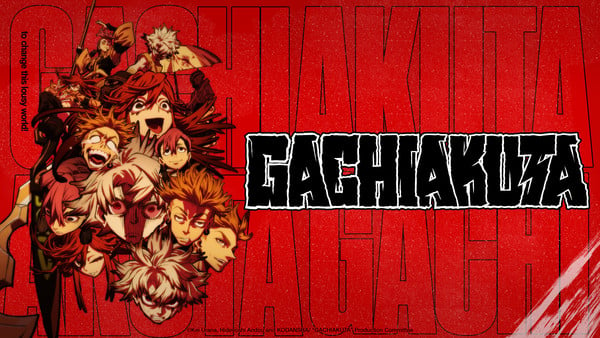
You could describe Gachiakuta's style as messy, gritty, grungy – all of which are befitting for a world set in a junkyard wasteland of garbage. The heavy weight of the linework paired with the freeform style of graffiti is a perfect match. With the anime adaptation having debuted, we can experience that world in motion and sound.
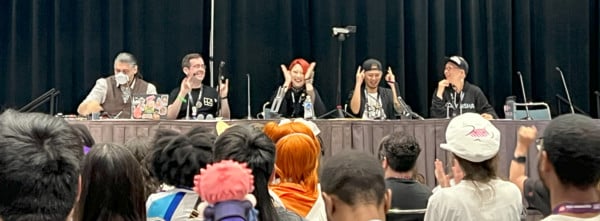
Also joining the conversation was Naoki Amano of Japanese animation studio Bones. It seemed quite a feat to adapt such a visually distinct work like Gachiakuta to animation, so I couldn't wait to ask him about the process.
Touching first on Urana-san's influences for the world of Gachiakuta itself, I asked what works or artists outside of the anime and manga world had shaped her distinct art style. “I feel like I've been influenced heavily by music,” Urana-san says. She elects not to share any specific musical artists, but you can make some educated guesses based on the overall style of the manga. “I'm using the music that matches the vibe of the scene whenever I'm drawing the manga.”
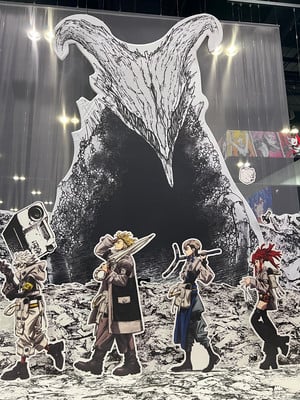
Our conversation shifted to art mediums and the question of analog vs digital. With so many productions going fully digital these days, did Urana-san have any strong feelings about keeping traditional analog methods like pen and paper alive?
“I think there's a strength to both,” she tells us. “For example, in analog, the lines have their own mind and soul, so it's something that [the reader] can feel from just looking at the art.” It's true of the art in Gachiakuta, at least. The line art is infused with a certain unmistakable energy.
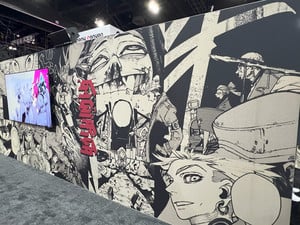
Andō-san is credited in Gachiakuta as Graffiti Designer, but it's only part of what he does. He also does calligraphy, tattoo designs, and generally adds visual flourishes to amplify and complement Urana-san's character art. His contributions are every bit as important for establishing the series' style.
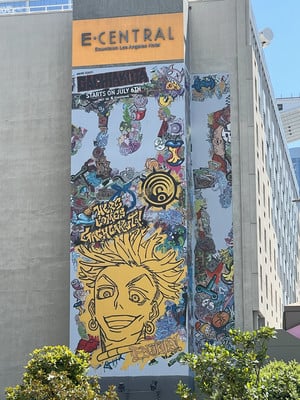
There are now many areas where graffiti artists are allowed to tag in a sanctioned way, even being commissioned for massive murals on walls and buildings. How does Andō-san feel about graffiti art and tagging in general becoming more widely accepted and acknowledged for its value as art?
“This is kind of like my personal view about art, but I think art itself is just art, and it doesn't have to belong to a genre,” he says. “So it's as if [graffiti art] has gone back to being just art.”
The Gachiakuta manga combines two unique styles to produce a pretty, eye-catching result. What was it like for Amano-san and the team at Bones to adapt that heavy line weight, graffiti art, and the intentionally grungy feel to animation?
“The uniqueness of the art was a challenge when working on this series. But that was also the charm,” Amano-san tells us. They used quite a bit of CG to match the style of thick lines and fades to keep the style consistent. “And in terms of the graffiti, luckily, Andō-sensei provided the graffiti [assets] and gave direction on how to use it in great detail.” He's confident they recreated the world of Gachiakuta in a very precise and detailed way.
He expanded on the various considerations of adapting Gachiakuta's particular style. “We decided on the production style for the series by discussing things like whether the trash beasts should be done with CG or animated by hand, how to draw the lines of the characters, and the stylistic treatments in post-processing.” Using several techniques seems challenging but rewarding. “It's always exciting and fun to see how each opinion and idea takes shape.”
Amano-san still has a respect for the old way of doing things – the tried and true pen and paper methods. “Even going digital has not changed this for me, so I'm always trying to find ways to replicate analog lines.” They tested various ways to reproduce the feel of the manga, and decided to go with hand-drawn animation plus post-processing effects. “Incidentally, we have many people, mainly veteran animators, who do the key animation for the series in analog (pencil and paper).”
It's no surprise that the Q&A panel and the premiere the following day at Anime Expo were well attended, with fans buzzing in anticipation.
I learned some interesting things about the creators at those events, like how Urana-san initially tried doing shojo manga. “It felt kind of weird and awkward,” she told the audience. After a friend steered her toward shonen manga instead, it just clicked. And it's a good thing that it did!
We also learned that Andō-san will sometimes walk around a neighborhood and take note of the signs of businesses to get new ideas, and that his favorite typeface is IMPACT.
Urana-san said she didn't believe that an anime adaptation was possible at first, but her worries dissipated after she met with the production staff at Bones. “When I asked [the director] a trick question, like 'What do you think about this part?' he was like, 'Oh, for that part I would do it like this, then this and this.' He already had an answer.”
Bones' Amano-san says Gachiakuta's pair of creators were diligent collaborators. Despite their busy schedules developing the manga, they followed through on their promise to check over everything, including the script, storyboards, and character designs. He says that dedication was crucial for adapting Gachiakuta's unique elements faithfully. “I'm grateful for that.”
It was no small feat taking Gachiakuta from the pages of the manga to screens in full animated glory, and the results speak for themselves.
discuss this in the forum |